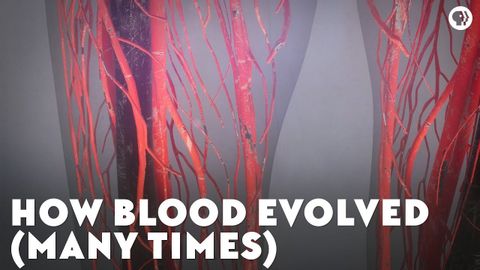How Blood Evolved (Many Times)
joey joey が 2021 年 05 月 03 日 に投稿  この条件に一致する単語はありません
この条件に一致する単語はありませんUS /ˈstrʌk.tʃɚ/
・
UK /ˈstrʌk.tʃə/
- n. (c./u.)構造;建物
- v.t.組み立てる;組織する
US /ˈɪnstəns/
・
UK /'ɪnstəns/
- n. (c./u.)例;発生;インスタンス
- v.t.例に挙げる
- phr.要請で
エネルギーを使用
すべての単語を解除
発音・解説・フィルター機能を解除

